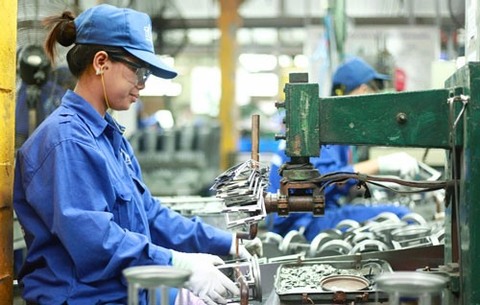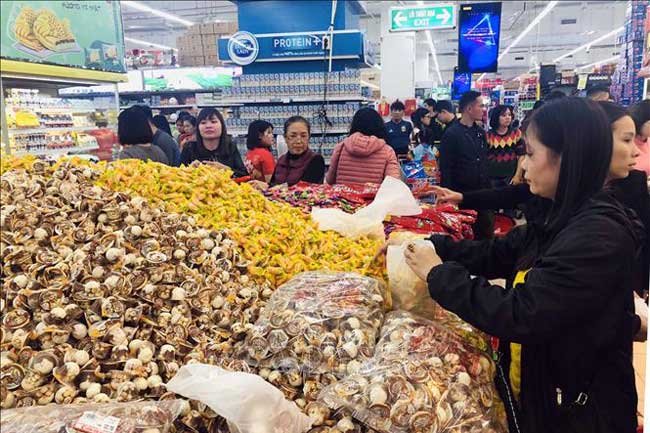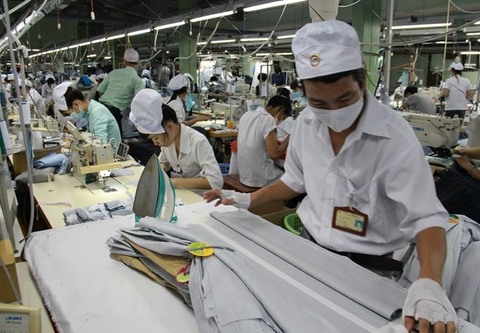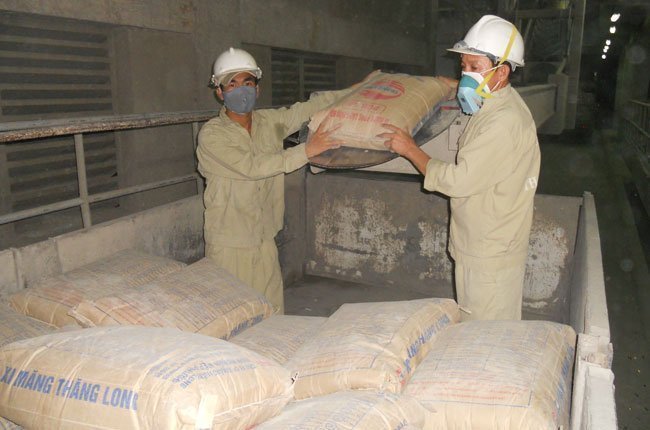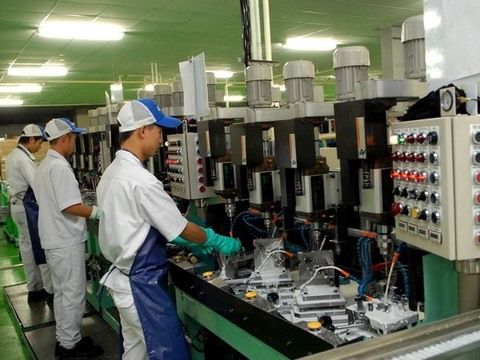Growing opportunities for agricultural sector
Growing opportunities for agricultural sector
In 2018, the Vietnamese agro-forestry-fishery sector weathered all difficulties to hit a seven-year growth record. Minister of Agriculture and Rural Development Nguyen Xuan Cuong talked with VIR’s Thanh Dat about the key reasons behind this impressive achievement, with an increase in overseas investment, and opportunities from new-generation free trade agreements.
In 2018, the sector grew by 3.76 per cent on-year, the highest level since 2011. What were the key reasons behind this superb achievement?
According to the General Statistics Office of Vietnam, despite challenges such as natural calamities and technical barriers imposed by importing markets, the sector grew by 3.76 per cent in 2018, well exceeding the target of 2.8-3 per cent set by the government. This great result has reflected the huge efforts of the sector in conducting agricultural restructuring, along with the great support from the party, the National Assembly, the government, as well as the strong actions by localities and all stakeholders, especially enterprises, co-operatives, and farmers to drastically implement the agricultural restructuring programme.
After five years of agricultural restructuring towards higher-added value and sustainable development, agro-forestry-fishery has been matching market demand, maximising advantages and effectively coping with climate change.
Export markets have been expanded, with an increase in the share of high-quality products. We are exporting to more than 180 economies, with the total five-year (2014-2018) export turnover hitting $157.49 billion, 51.2 per cent higher than in the previous five-year period.
The figure reached over $40 billion in 2018, higher than the $36.37 billion in 2017, with 10 commodities having export turnover of more than $1 billion, and in which five commodities had export turnover of more than $3 billion. These impressive figures show that the sector is on the right track, and reflects the huge efforts of all economic stakeholders.
It is expected that the sector will grow by 3.0 per cent in 2019, with its annual total export turnover of $42-43 billion.
Foreign direct investment (FDI) into the sector remains limited compared to others. What are the reasons for this, and how was agro-forestry-fishery FDI like in 2018?
Over the past years, FDI has contributed to the increased total investment in the economy in general and in the sector in particular. The total number of valid foreign-invested projects by late 2018 in the agro-forestry-fishery sector was 491, with the accumulative registered capital of $3.455 billion. These projects covered diversified activities, from the production to processing of agro-forestry-fishery commodities. They have also brought into Vietnam modern machinery and equipment, as well as high productivity and high-quality breeds and varieties to match international standards.
However, the number of projects remains humble, and far below the potential if taking into account the country’s natural conditions, land, labour, and purchasing power.
The government and the Ministry of Agriculture and Rural Development (MARD) are focusing on the development of green and safe agriculture to meet the growing domestic and international demand.
Currently, the whole political system, from top leaders to ministries and localities, are paying special attention to agro-forestry-fishery restructuring, via many resolutions, laws, and regulations in order to attract more resources, including FDI, into the sector.
Vietnam is also boosting international integration, with the inking and implementation of many free trade agreements (FTAs), especially new-generation ones including the Comprehensive and Progressive Agreement for Trans-Pacific Partnership (CPTPP) which took effect on January 14, 2019.
Japan is one of the CPTPP members with an intensive strategic partnership with Vietnam in many sectors. As of December 20, 2018, Japan had 3,996 valid investment ventures in Vietnam, with registered capital of $57 billion, making Japan the largest foreign investor in the country. From January to December 20 last year, Japan poured money into 429 projects here, with registered capital of $6.59 billion. If stake acquisition and additional capital from operational projects were included, total Japanese investment in Vietnam was $24.24 billion.
Japanese investors are actively and successfully implementing agricultural projects in Vietnam, especially those that apply advanced technology to the agro-forestry-fishery production value chains in order to create competitiveness, added value, and safety for products.
However, the sector’s development still relies on small-scale production. We have about 8.6 million households, with nearly 70 million small land plots. This is a very big obstacle to developing large-scale and concentrated production. Meanwhile, the sector’s development has also been adversely affected by natural calamities, epidemics, and climate change. It also faces harsh competition from other economic sectors in the use of human resources, land, and water resources. These factors are the main reasons behind low investment in the agro-forestry-fishery sector.
What are the solutions to attract more funding into the agro-forestry-fishery sector?
Encouragingly, over the past two years, the number of agricultural businesses has tripled. As of the end of last year, the number stood at 9,235. If counting enterprises operating in agro-forestry-fishery processing, and foodstuffs trading, the total number is now 49,600.
Vietnam has joined the global agricultural value chain, and has become the world’s 15th largest exporter of farm produce. We have two big markets, namely the domestic one with nearly 100 million people and an average annual economic growth rate of 6-7 per cent, and the global market of 7.5 billion people. This shows that there is big potential for agricultural investment.
The government, ministries, and agencies are revising many regulations to attract more investment into the sector, such as Decree No.57/2018/ND-CP on mechanisms and policies to encourage enterprises to invest into agricultural and rural development, and Decree No.109/2018/ND-CP on organic agricultural development.
In 2018, the MARD continued to reduce and remove many administrative procedures, and truncating specialised inspections via new decrees and laws. This task has exceeded the target set by the government. These solutions have helped attract more investment into the sector.
The CPTPP has taken effect. How will it impact the Vietnamese agro-forestry-fisherysector?
The deal and its related documents were adopted by the National Assembly on November 12 last year. This demonstrates Vietnam’s strong commitments in economic reform and comprehensive international integration. The CPTPP will reduce import tariffs across 11 member states, whose total GDP value is over $10 trillion, accounting for 13.5 per cent of the global GDP, and 15.2 per cent of the global trade. With a total population of over 500 million people, the CPTPP is one of the biggest trade deals in the world.
The CPTPP will give Vietnam both opportunities and challenges. Vietnam has big advantages in agricultural development, as compared to other CPTPP nations. If we can make the best use of opportunities in market expansion brought about by the CPTPP, the Vietnamese agro-forestry-fishery sector can maintain its trade surplus, especially items with clear comparative advantages such as aquatic products, wood, vegetables, and fruit.
However, within the CPTPP, though participating nations have to reduce import tariffs, they can raise their non-tariff barriers in order to protect their domestic production and meet ever-increasing consumption standards in their local markets. Thus, if Vietnam fails to overcome these obstacles, it will find it difficult to entering the markets of the CPTPP.
What opportunities could also be created in this sector via the EU-Vietnam FTA (EVFTA)?
The EVFTA is expected to help Vietnamese businesses join global supply chains, and access more capital and scientific and technological achievements via FDI. However, to gain these, much needs to be carried out for domestic enterprises. Under the deal’s commitments, 99.2 per cent of all import tariffs will be reduced to 0 per cent for all European nations. This will greatly benefit Vietnamese businesses. Vietnam’s raw exports, whose import tariffs are now low at 0-5 per cent, will not be changed greatly. However, processed items will enjoy a tariff reduction to 0 per cent from the existing average 10 per cent. Thus, businesses with heavy investment into intensive processing will greatly benefit from tariff cuts.
The EU is a big importer of Vietnam’s agro-forestry-fishery products. In recent years, two-way trade in farm produce between Vietnam and the EU has increased continuously, at nearly $5.8 billion in 2017, and $4.9 billion in the first 10 months of 2018. Notably, Vietnam has continuously enjoyed a trade surplus with the EU, including agro-forestry-fishery exports like tea, coffee, and aquatic products.
In terms of investment, as of December 20, the EU had 2,194 valid investment projects in Vietnam, worth $24.3 billion in total. After the EVFTA takes effect, more European funding will continue entering the country, including into the agro-forestry-fishery sector.



